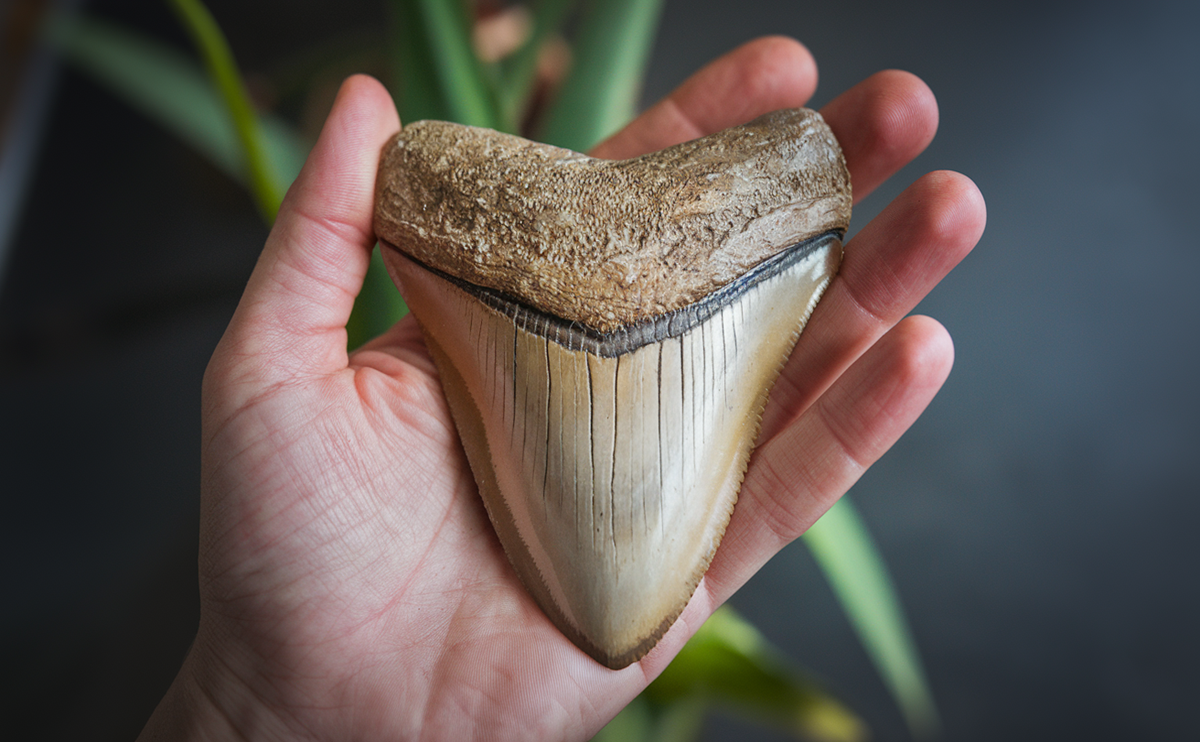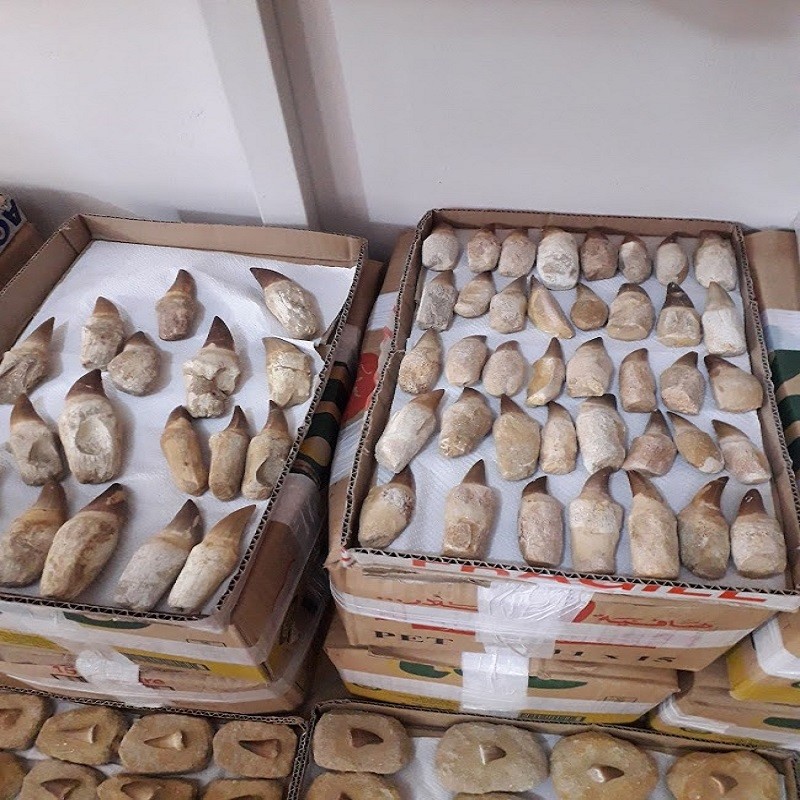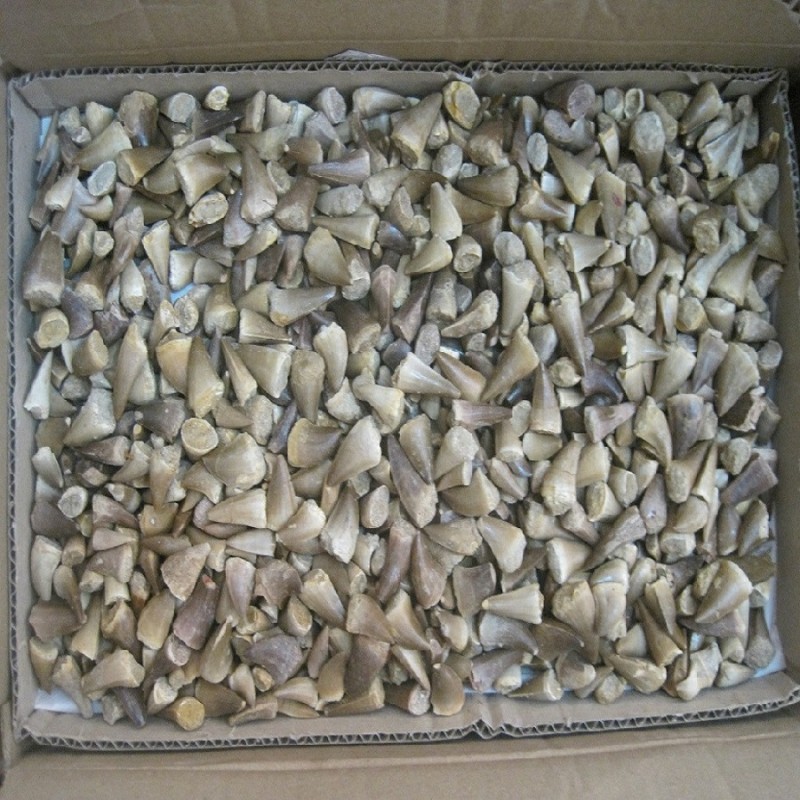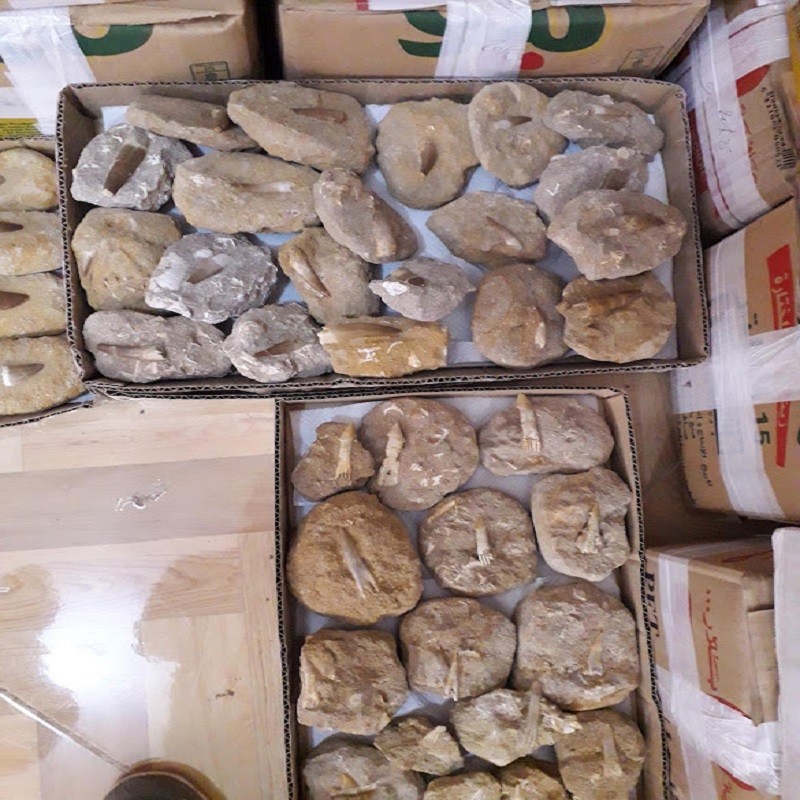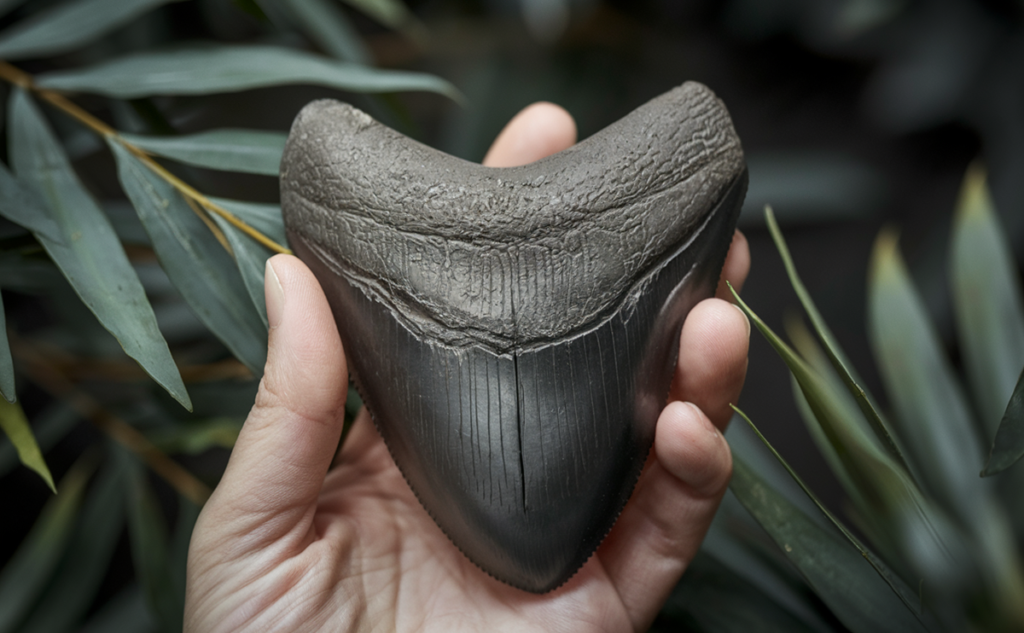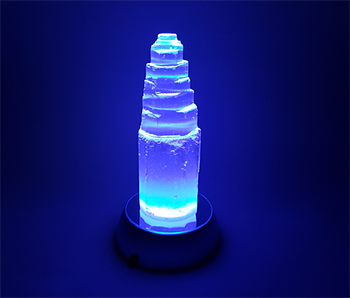What are Fossil Sharks’ Teeth?
The Fascination with Shark Fossil Teeth
How Fossilized Shark Teeth Are Formed
Where to Find Fossil Shark Teeth
The Scientific Importance of Fossilized Shark Teeth
Why Collect Fossil Sharks’ Teeth?
How to Identify Fossilized Shark Teeth
Final thoughts
Sharks have been cruising through our oceans for more than 400 million years, making them some of the oldest and most awe-inspiring creatures to ever live. Among the fascinating remnants they’ve left behind, fossil shark teeth are a true treasure. These ancient, often beautifully preserved relics give us a window into the lives of the powerful predators that once ruled prehistoric seas.
Whether you’re a passionate fossil collector or just someone captivated by the ancient world, fossilized shark teeth hold a special kind of magic. They blend science, history, and natural beauty all in one. In this article, we’ll dive into the fascinating world of shark fossil teeth—how they’re formed, where you can find them, and why they’re so highly prized by both collectors and scientists alike.
What are Fossil Sharks’ Teeth?
Fossil sharks’ teeth are remnants of sharks that lived millions of years ago. Unlike most fossils, which typically include bones and other hard body parts, shark fossils primarily consist of teeth. This is because sharks are cartilaginous fish, meaning their skeletons are made of cartilage—a softer, more flexible tissue than bone. Over time, this cartilage decays without leaving a trace, but the teeth, which are much harder and durable, often become fossilized.
Fossilized shark teeth can date back tens of millions of years, with some specimens being over 50 million years old. These teeth are often found in sediments or coastal deposits where ancient oceans once existed. Their preservation provides invaluable insight into the species, behavior, and diet of prehistoric sharks.
The Fascination with Shark Fossil Teeth
For both enthusiasts and scientists, fossil shark teeth represent more than just a collectible—they’re a direct connection to a time when massive predators like the Megalodon ruled the seas. The fossilized shark teeth market is booming, with a variety of species and sizes available, making them accessible to a wide range of collectors.
What adds to the intrigue of these fossils is their variation in size, color, and condition. Some fossils may have retained their original sharpness and detail, while others may show signs of erosion, each telling its own unique story. For example, the largest known species of prehistoric shark, the Megalodon, had teeth that could measure over 7 inches long, making them some of the most sought-after shark fossil teeth in the world.
How Fossilized Shark Teeth Are Formed
The process by which fossilized sharks’ teeth form is both fascinating and complex. Sharks are known for their rapid tooth turnover. In fact, a single shark can lose thousands of teeth in its lifetime, with some species replacing their teeth every few weeks. When a shark’s tooth falls out, it can either be swept away by ocean currents or sink into the seabed. Over time, layers of sediment build up over these teeth, protecting them from decay.
As the sediment compacts, minerals in the water seep into the tooth, gradually replacing its organic material with stone. This process, known as permineralization, can take thousands to millions of years, depending on environmental conditions. The end result is a beautifully preserved fossilized shark tooth that has turned to stone, capturing a moment in prehistoric time.
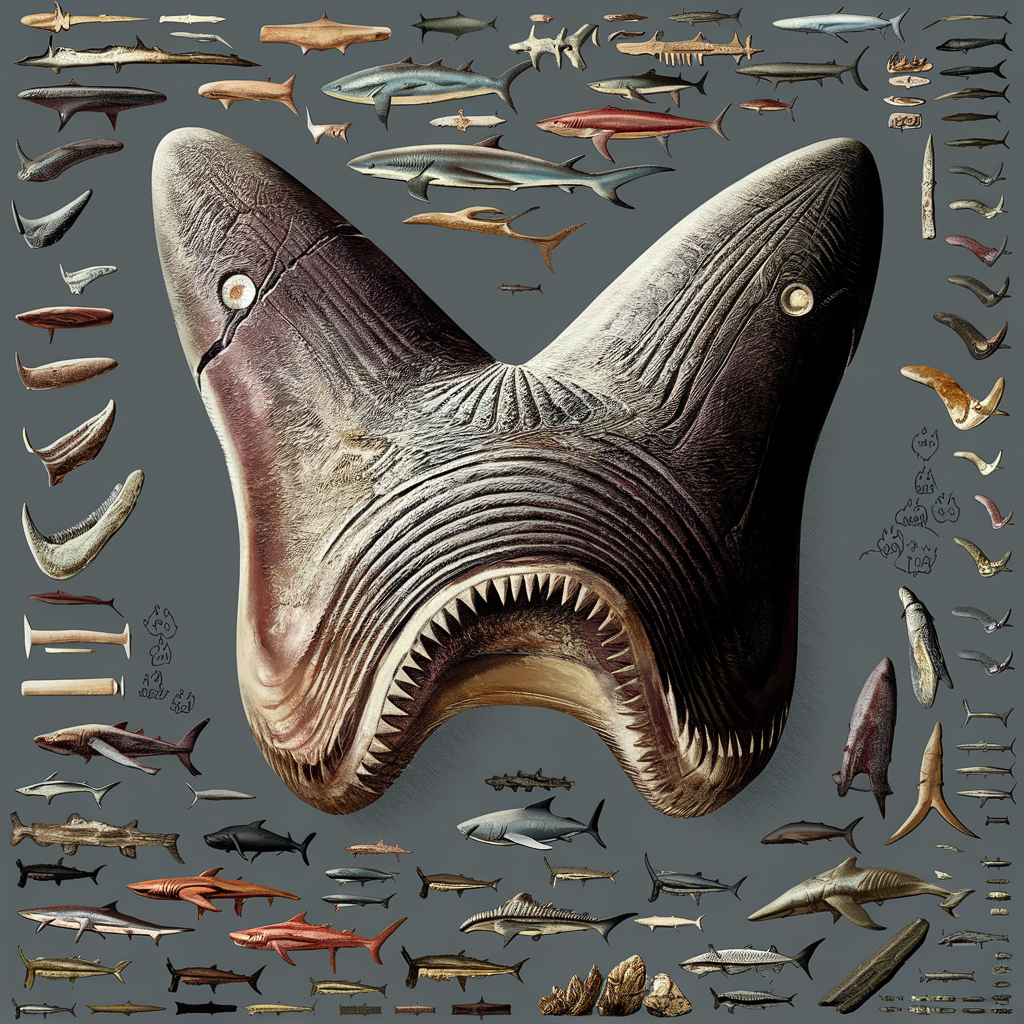
Where to Find Fossil Shark Teeth
For collectors, finding fossilized sharks’ teeth can be both an exciting adventure and a profitable hobby. While they can be found in various places around the world, some locations are particularly famous for their rich deposits of shark fossil teeth:
- Florida, USA: The state of Florida is known for its abundance of fossil shark teeth, particularly in the Peace River and Venice Beach areas. This region was once submerged under prehistoric seas, making it a hotbed for shark fossils today.
- South Carolina, USA: South Carolina’s rivers and coastal areas are teeming with fossilized shark teeth from various species, including the Megalodon.
3. Morocco: Known for its fossil-rich desert landscapes, Morocco is a great source of fossilized sharks’ teeth and other marine fossils. The phosphate beds of Morocco are particularly rich in shark teeth from the Cretaceous and Paleogene periods.
4. Maryland, USA: The Chesapeake Bay area, particularly along Calvert Cliffs, is another prime location for shark fossil teeth, with many discoveries made by beachcombers after a storm.
These locations offer not just the opportunity to collect fossil sharks’ teeth, but also to learn more about ancient marine ecosystems.
The Scientific Importance of Fossilized Shark Teeth
Beyond their aesthetic appeal, fossilized sharks’ teeth hold immense scientific value. Paleontologists study these fossils to learn more about the evolution of sharks, their diets, and the environments they lived in. For instance, the size and shape of a shark tooth can reveal what type of prey the shark specialized in—whether it was a fish-eater or a predator that targeted larger marine animals like whales.
The fossil record of sharks, primarily composed of their teeth, also provides key information about environmental changes over millions of years. By examining the different species of fossilized shark teeth found in certain layers of rock, scientists can determine how marine life adapted to shifts in climate, sea levels, and food availability.
Why Collect Fossil Sharks’ Teeth?
Collecting fossilized shark teeth offers a unique opportunity to own a piece of natural history. For some, it’s the thrill of the hunt—scouring beaches, riverbeds, and other fossil-rich areas in search of the perfect specimen. For others, it’s the sheer beauty and craftsmanship of nature in preserving these relics. And for many, it’s the connection to one of the ocean’s most iconic and ancient predators that fuels their passion.
In addition to their beauty and scientific value, fossilized sharks’ teeth are also a wise investment. As the market for natural history collectibles grows, the demand for rare and well-preserved shark teeth continues to increase, especially for large teeth from species like the Megalodon.
How to Identify Fossilized Shark Teeth
Identifying fossilized shark teeth can be a rewarding and educational experience. While there are many species of sharks, the teeth of each type often share certain characteristics that help distinguish them. Here’s a guide to help you determine whether you’ve found a genuine fossil shark tooth and identify its species:
- Color: One of the easiest ways to identify a fossilized shark tooth is by its color. Unlike modern shark teeth, which are typically white or ivory, fossil teeth often have a dark or earthy hue. This discoloration occurs because minerals from the surrounding sediment have replaced the organic material over time, giving the fossil its darker appearance. Fossil shark teeth can range from black, brown, or gray to even blue or red, depending on the minerals present in the environment where they were preserved.
- Size and Shape: The size and shape of a tooth can give clues about the species of shark it belonged to. For example, Megalodon teeth are enormous, with some reaching lengths of over 7 inches, and they have a triangular shape with fine serrations along the edges. Teeth from smaller sharks, like the Sand Tiger, are long and narrow with smooth edges, while the teeth of Great White Sharks tend to have a triangular shape with serrations. Understanding these size and shape variations will help you identify what kind of shark the tooth came from.
- Tooth Structure: Another key feature is the structure of the tooth. Fossilized shark teeth are often robust and well-preserved due to the durability of enamel. Examine the tooth closely for serrations along the edges, which can indicate that it came from a predatory species. Sharks like the Megalodon or Great White had finely serrated teeth to help them tear through their prey, while other sharks, such as the Lemon Shark, have smooth-edged teeth.
- Location: The place where the tooth is found can provide vital clues about its identity. Different species of sharks lived in various environments. For example, finding a tooth in a marine fossil bed, like those in Morocco or South Carolina, increases the likelihood that it belonged to an ancient ocean predator. Each location tends to yield fossils from specific geological periods, so understanding the site’s history can narrow down your options.
- Fossil Patterns: Fossilized shark teeth sometimes exhibit distinct patterns that reveal their age or species. These can include ridges, wear marks, or signs of root erosion. Shark teeth often fall out and are replaced quickly, so if you find a tooth with intact serrations or minimal wear, it could indicate a younger shark. Conversely, teeth with more significant erosion might be from a much older fossil specimen.
- Comparison with Known Species: If you’re unsure of your fossil’s origin, compare it to photos or descriptions of teeth from known shark species. Online databases, museums, or fossil guides can help you identify the exact species of shark that the tooth belonged to. Shark teeth from extinct species like Otodus or Carcharocles (ancestors of the Megalodon) have distinct features that separate them from modern species.
By using these identification methods, you can better understand the significance of the fossilized shark teeth you’ve found or collected. Whether you’re seeking to add to your collection or simply exploring the world of fossils, learning how to accurately identify shark teeth is a crucial step in appreciating their historical and scientific value.
Final Thoughts on Fossilized Shark Teeth
Whether you’re a seasoned collector or just starting your journey into the world of fossils, fossilized shark teeth are more than just collectibles—they’re fascinating pieces of natural history. Each tooth has its own story to tell, connecting us to a time when mighty sharks ruled the oceans.
Ready to start your own collection? Browse our selection of fossilized shark teeth today and uncover a piece of prehistoric history!

